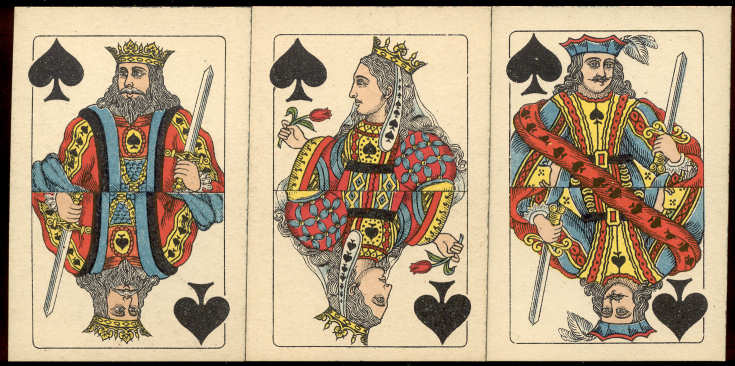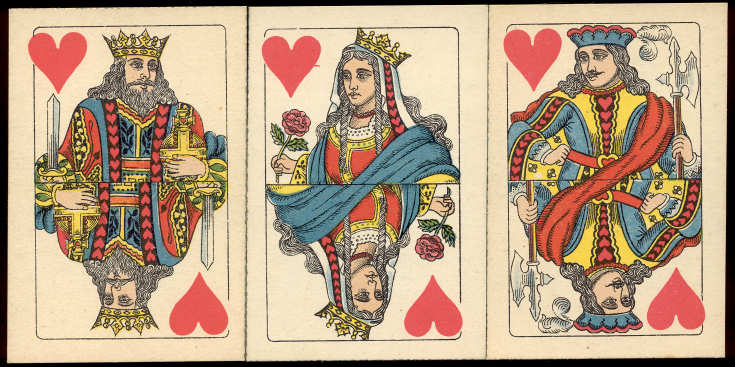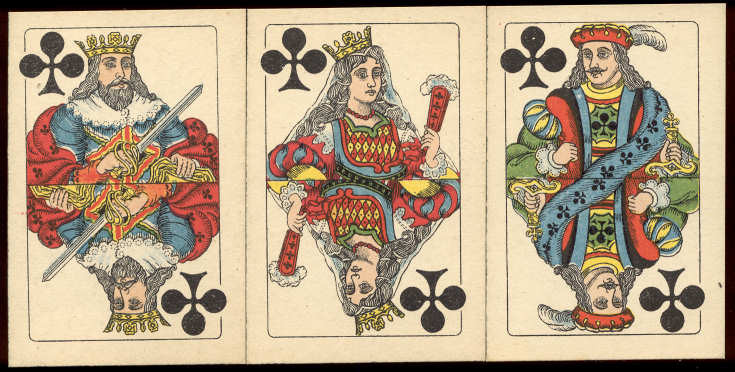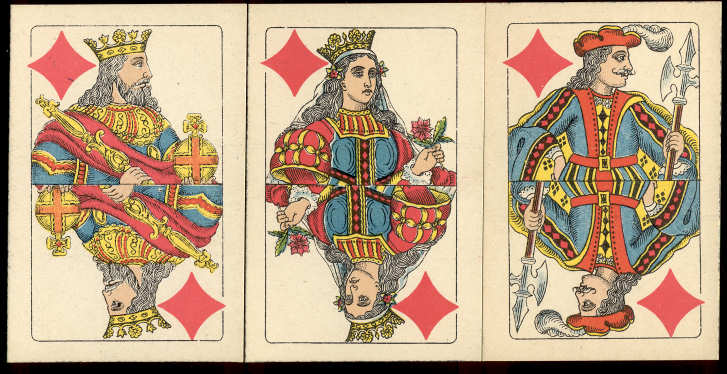
April 2008
Sometimes the best comes at the end of the month and this month we had to wait until the second last day. In fact the very last possible day, because the last day of April is our "Queen's Day" and then the postal services do not work. In celebration of her birthday (in fact the birthday of our present Queen's mother, Juliana) free markets are held throughout the country. As usual we went to a small but pleasant and nearby town, Hoorn. This year we found some nice decks, but nothing that could beat the deck below, which arrived the second last day of the month by mail.
We bought it from a fellow-collector from the Netherlands.......through Ebay. The deck was probably made in the Netherlands, but the maker is unknown. Our deck came without the original wrapper, but from the description of this deck in a book that was published by the Dutch Tax Museum we assume that it was published as "Nr. 11 Bon Gout, Piquet Kaarten" between 1910 and 1920. On the wrapper it also says "Hollandsch Fabrikaat" (Dutch manufacture). There's only one thing that we'll need to clarify in the coming weeks: in the description the museum mentions that the decks consists of 54 cards. Our deck only held 52 cards. So..... time to get in touch with the museum, but first some personal remarks.......


The deck has an unusual pattern for the Netherlands. Especially the Jacks have features that are not found on any of the local or imported cards from that era. The deck has scenic aces, representing famous buildings in those days. Some views are nowadays still almost identical, like that of the Rijksmuseum in Amsterdam or the Binnenhof in The Hague, but the "Paleis voor de Volksvlijt" on the Ace of Diamonds was almost completely destroyed by fire in 1929 (also see deck May 2007) and since the 1960's a modern building has taken it's place. On the Ace of Spades the "Witte Huis" (White House) is depicted. Constructed in Art Nouveau style in 1897, this 10 floors building was the first skyscraper in Rotterdam and....Europe. To our knowledge there's only one other ace, on which this building is depicted, and that is the Ace of Spades from a set of Dutch scenic aces, that came with a "Neerlandia C" deck, made by the Speelkaartenfabriek Nederland from Amsterdam ca. 1918. An interesting detail on the Ace of Hearts is the electrical tram. Since 1906 the former line 3 had a stop at the Binnenhof, but in 1924 the route was changed and no trams have crossed the Binnenhof since then. So I would personally rather date the deck closer to 1910 than 1920.
The deck was printed in
bookprint, an early offset technique.
There are no indices on the courts or
numbers on the pips. Each of the courts has the suit signs embedded in the
design.


|
|
We have contacted the Belasting Museum and have spoken with Mr. John J. Vrouwenfelder, the curator of the playing cards division. He could set us straight about our two "missing" cards: an error must have been made in the catalogue of the museum, as the museum's deck also consists of 52 cards only. Mr. Vrouwenfelder was nice enough to send us a scan of the original wrapper, which we show here on the left. But... he also expressed his doubts about this wrapper. Was it the wrapper that held this deck? Piquet is a game that is played with 32 cards and the sides of the wrapper are just high enough for 32 regular cards. |
|
However, the cards from our deck are pretty thin, making this 52 cards deck much slimmer than a regular deck, but still a bit thicker than a 32 cards deck. So John Vrouwenfelder's doubts about the wrapper could be correct and maybe the deck wasn't made in the Netherlands after all. |
|